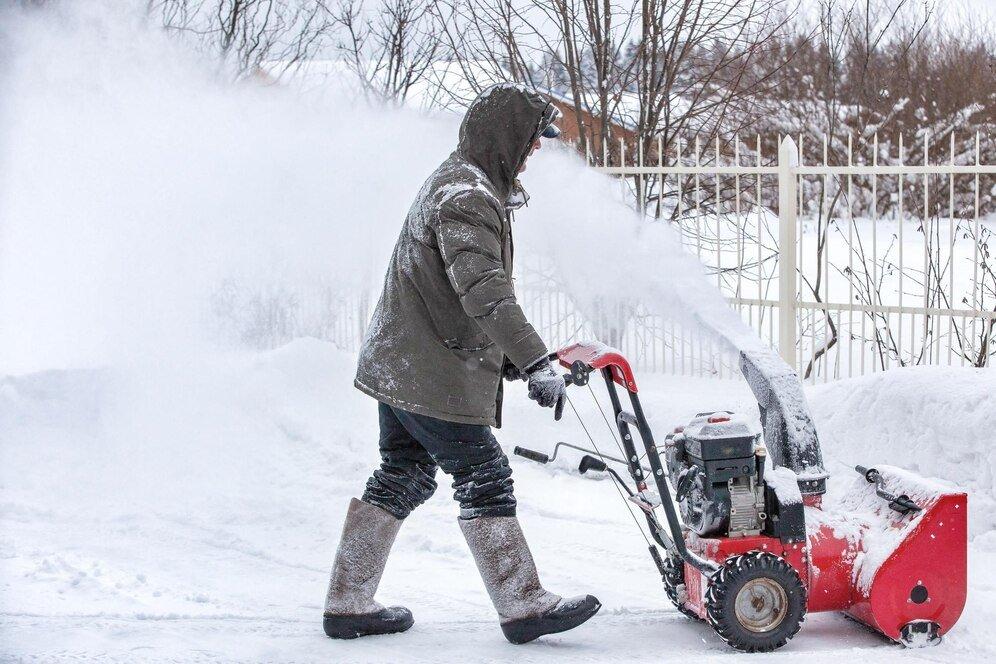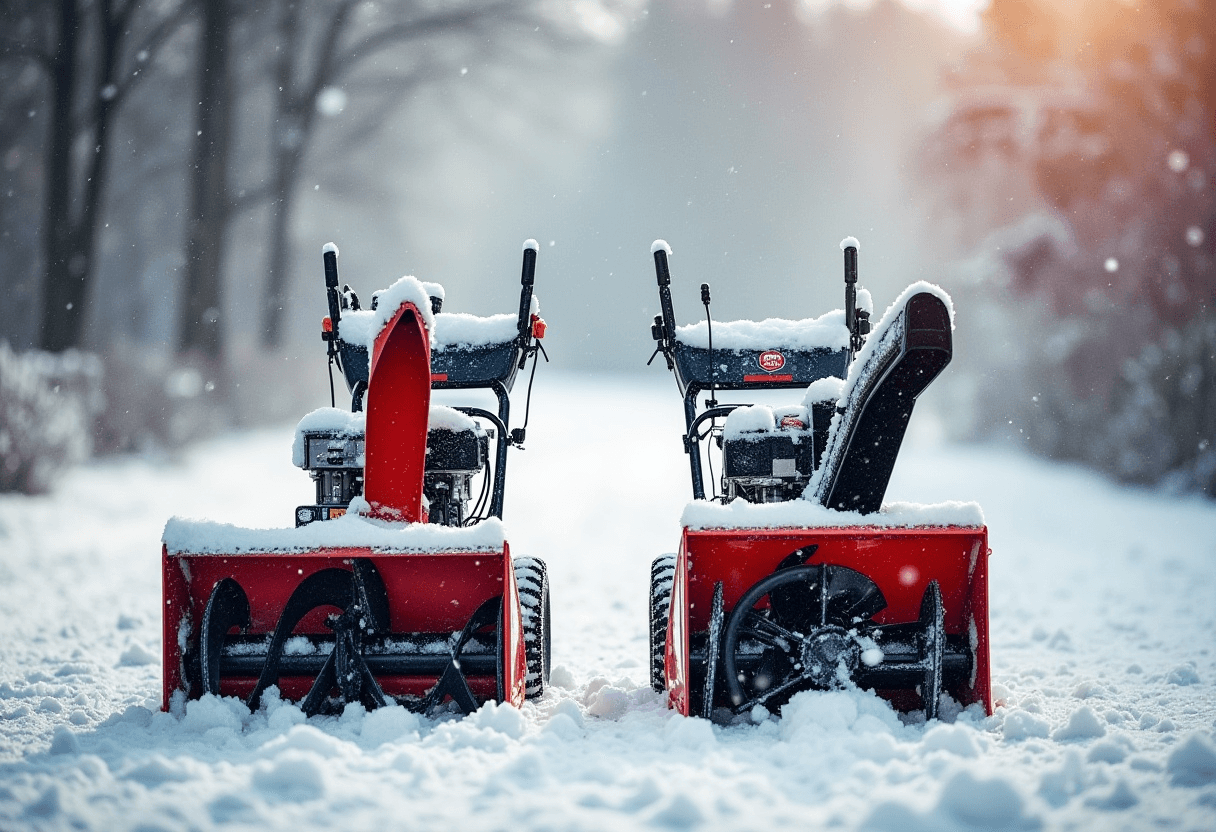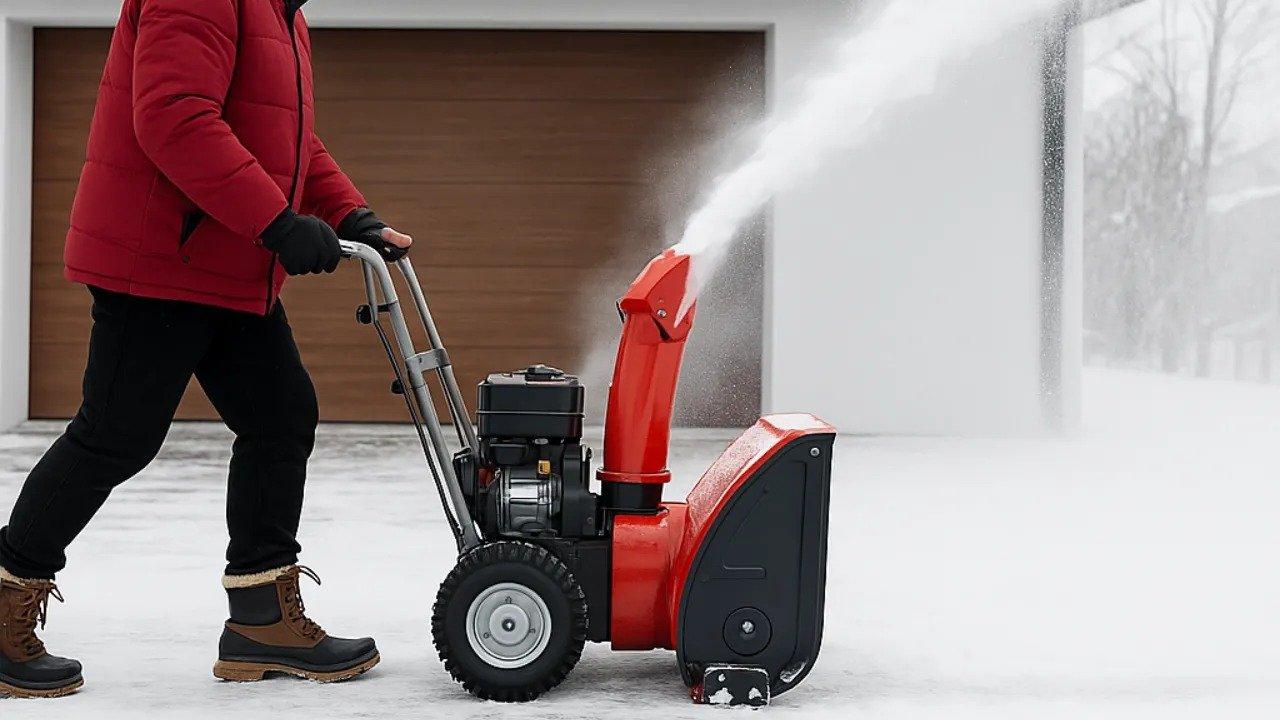How-To Guides
How to Tune Up My Snowblower: A Step-by-Step Guide
AZparts Team
Updated on June 16, 2025
6 min read
Want to make sure your snowblower is ready when the first snowfall hits? Regular maintenance is the key to keeping it running smoothly and reliably all winter long. A seasonal tune-up can prevent frustrating breakdowns and extend the life of your machine.
In this step-by-step guide, AZParts will walk you through everything you need to know to tune up your snowblower properly — so you're fully prepared for whatever winter throws your way.

1. How to Tune Up My Snow Blower
1.1 Step 1: Prepare Your Snowblower for Maintenance
Before beginning your snowblower tune-up, find a well-ventilated workspace with good lighting. Spread a tarp or cardboard underneath to catch any fluid spills. Gather essential tools including:
- Socket and wrench set
- Screwdrivers (Phillips and flathead)
- Pliers
- Oil drain pan
- Funnel
- Clean rags
- Owner's manual
When working with power equipment like snow blowers, safety should always be your top priority. Begin by disconnecting the spark plug wire to prevent accidental starting during maintenance, which is especially important when you'll be working near moving parts or fuel systems. Additionally, make sure the engine is completely cool before touching any components to avoid painful burns from hot metal parts.
As an extra safety measure, turn the fuel valve to the "Off" position if your model features one, then remove the key from the ignition switch and engage any available safety locks.
Prepare Your Snowblower for Maintenance (Source: Freepik)
1.2 Step 2: Drain and Replace Fluids
With your workspace prepared, start by addressing the fuel system. Old fuel forms harmful deposits, so use a siphon pump to remove remaining fuel from the previous season.
Next, focus on the engine oil. Locate the drain plug beneath the engine, place a pan underneath, and remove the plug to drain completely. Once finished, securely replace the plug without overtightening.
After draining the old fluids, check your manual for the recommended oil type and capacity. Use a funnel to add fresh oil slowly and verify the proper level with the dipstick. For fuel, select fresh gasoline with the correct octane rating, adding stabilizer if needed to prevent degradation and protect your carburetor.
Removing the remaining fuel from the previous season (Source: Google)
1.3 Step 3: Check and Replace Key Components
With fresh fluids in place, turn your attention to the fuel filter. A clogged filter restricts flow, so turn off the fuel valve and carefully remove the old filter, noting its orientation. Install the new filter in the same direction for proper fuel flow. AZParts offers OEM-quality filters matched to your snowblower's specifications.
While working on the fuel system, examine the fuel lines for cracks or hardening. Squeeze them to check flexibility and look for pinched areas or blockages.
Complete your component check by replacing the spark plug, which affects starting and performance. Remove the old plug with a socket wrench, set the proper gap on the new one according to your manual, and install it by hand first to avoid cross-threading. This simple replacement ensures reliable operation all winter.
Replacing the spark plug (Source: AZParts)
1.4 Step 4: Inspect and Maintain Tires and Skid Shoes
After addressing internal components, check your snowblower's exterior parts. Inspect your tires and inflate them to the recommended pressure found in your manual or on the sidewall. Proper inflation provides better traction and prevents the machine from pulling to one side during operation.
Next, adjust the skid shoes that control how close the auger housing comes to the ground. Place your snowblower on a flat surface, loosen the mounting bolts on both sides, and set the shoes to an equal height. Set them closer to the housing for paved surfaces or lower for gravel driveways to prevent damage while ensuring effective snow removal.
Inspecting and maintaining tires Snowblower (Source: AZParts)
1.5 Step 5: Lubricate Snowblower Components for Smooth Operation
Proper lubrication is crucial for smooth operation and longevity. Locate the grease fittings on the auger shaft and apply high-quality lithium grease using a grease gun until you see a small amount seeping from the seals. This prevents expensive repairs and extends the life of your auger assembly.
For better snow throwing efficiency, apply silicone spray lubricant to the inside of the auger housing and snow chute, creating a slick surface that prevents snow from sticking. Then remove the bottom panel to access and grease the axle and hex drive shaft, ensuring all moving parts move freely.
Finally, spray penetrating oil on all control cable pivot points and moving parts in the control system. Work the controls back and forth to distribute the lubricant evenly. Well-lubricated controls respond better in cold temperatures and reduce the effort needed during operation.
Lubricating the Snowblower (Source: Google)
1.6 Step 6: Final Checks and Adjustments
With maintenance nearly complete, perform some final checks. Test all controls to verify they move freely and return to neutral when released. Confirm that the auger stops completely when its handle is released—this critical safety feature prevents accidents during operation.
Also test the chute rotation mechanism for smooth movement in all directions, lubricating any sticking points. Verify that the deflector adjusts easily and holds its position. For machines with multiple speed settings, confirm each setting engages properly and that forward and reverse functions work correctly.
Final check the Snowblower (Source: Freepik)
1.7 Step 7: Ready for Use!
After completing all maintenance tasks, reconnect the spark plug wire and start your snowblower. Listen for unusual noises and check that the engine runs smoothly at both idle and full throttle. Observe that all mechanisms engage properly and look for any fluid leaks.
Take your freshly tuned snowblower for a quick test run in your yard to ensure it handles properly. If you notice any issues, address them immediately. AZParts offers a comprehensive selection of snowblower parts to solve any problems you encounter during your tune-up process.
2. How to Know When Your Snowblower Needs a Tune-Up
Regular maintenance prevents costly repairs, but how do you know when your snowblower needs attention? Watch for these warning signs:
- Difficulty starting or frequent stalling
- Reduced throwing distance or power
- Unusual noises during operation
- Visible leaks or damaged components
- Controls that feel stiff or unresponsive
Don't wait until these problems appear—schedule annual maintenance before the snow season begins. For reliable performance, AZParts offers essential snowblower maintenance parts including replacement belts, shear pins, skid shoes, and scraper blades specifically designed for your model.
AZParts snowblower collection includes quality replacement parts like auger belts that prevent slipping during heavy snow removal, durable shear pins that protect your gearbox from damage, and premium spark plugs for reliable starting in cold weather. Their extensive inventory ensures you can find exactly what you need to keep your snowblower running at peak performance.
Contact Information:
- 8 The Green, Ste A, Dover, Delaware 19901-3618, United States
- support@azparts.com
Snowblower
- 1. How to Tune Up My Snow Blower
- 1.1 Step 1: Prepare Your Snowblower for Maintenance
- 1.2 Step 2: Drain and Replace Fluids
- 1.3 Step 3: Check and Replace Key Components
- 1.4 Step 4: Inspect and Maintain Tires and Skid Shoes
- 1.5 Step 5: Lubricate Snowblower Components for Smooth Operation
- 1.6 Step 6: Final Checks and Adjustments
- 1.7 Step 7: Ready for Use!
- 2. How to Know When Your Snowblower Needs a Tune-Up
Further Reading
Further Reading




%2520Cropped_1747039495.jpg&w=3840&q=75)
_1750053523.jpg&w=3840&q=75)